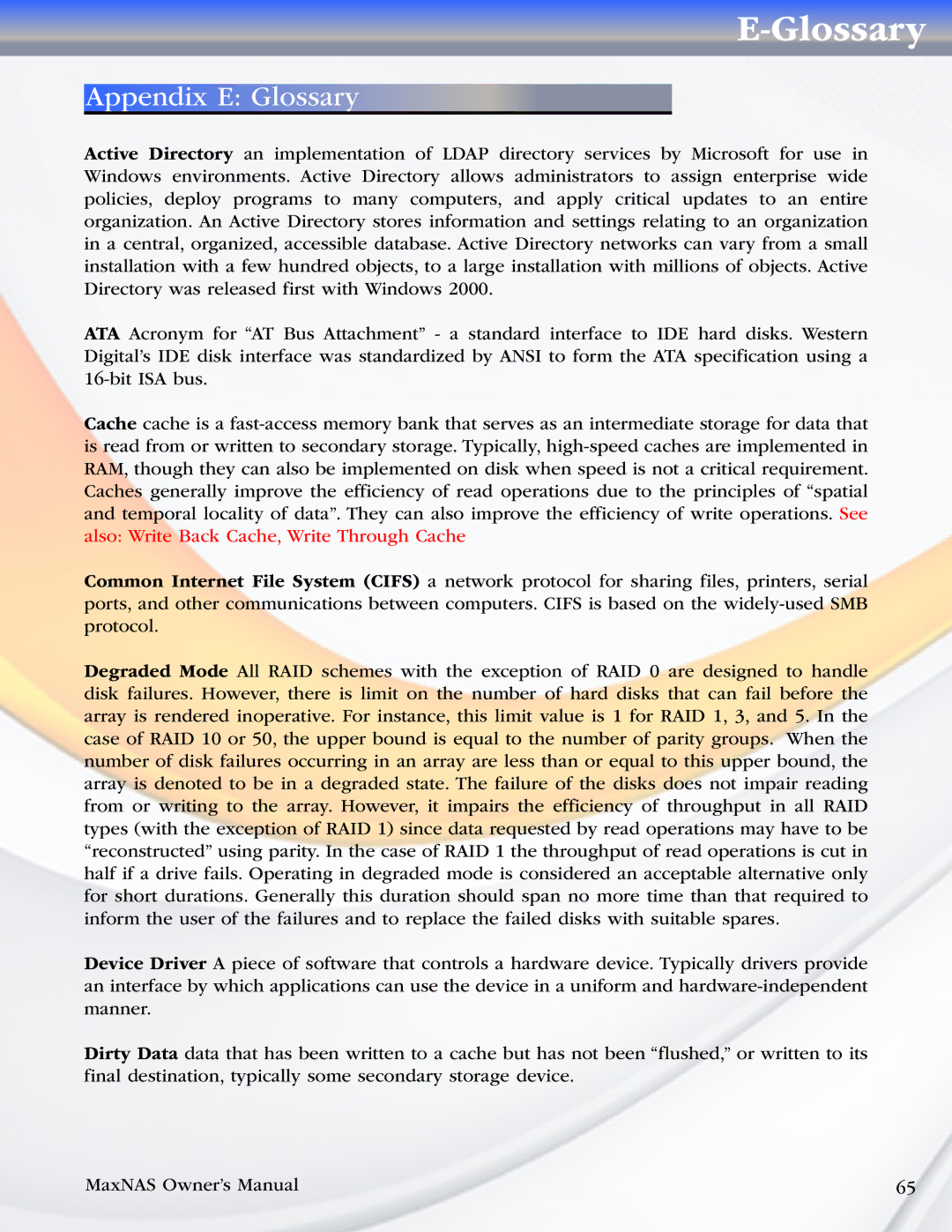
E-Glossary
Appendix E: Glossary
Active Directory an implementation of LDAP directory services by Microsoft for use in Windows environments. Active Directory allows administrators to assign enterprise wide policies, deploy programs to many computers, and apply critical updates to an entire organization. An Active Directory stores information and settings relating to an organization in a central, organized, accessible database. Active Directory networks can vary from a small installation with a few hundred objects, to a large installation with millions of objects. Active Directory was released first with Windows 2000.
ATA Acronym for “AT Bus Attachment” - a standard interface to IDE hard disks. Western Digital’s IDE disk interface was standardized by ANSI to form the ATA specification using a
Cache cache is a
Common Internet File System (CIFS) a network protocol for sharing files, printers, serial ports, and other communications between computers. CIFS is based on the
Degraded Mode All RAID schemes with the exception of RAID 0 are designed to handle disk failures. However, there is limit on the number of hard disks that can fail before the array is rendered inoperative. For instance, this limit value is 1 for RAID 1, 3, and 5. In the case of RAID 10 or 50, the upper bound is equal to the number of parity groups. When the number of disk failures occurring in an array are less than or equal to this upper bound, the array is denoted to be in a degraded state. The failure of the disks does not impair reading from or writing to the array. However, it impairs the efficiency of throughput in all RAID types (with the exception of RAID 1) since data requested by read operations may have to be “reconstructed” using parity. In the case of RAID 1 the throughput of read operations is cut in half if a drive fails. Operating in degraded mode is considered an acceptable alternative only for short durations. Generally this duration should span no more time than that required to inform the user of the failures and to replace the failed disks with suitable spares.
Device Driver A piece of software that controls a hardware device. Typically drivers provide an interface by which applications can use the device in a uniform and
Dirty Data data that has been written to a cache but has not been “flushed,” or written to its final destination, typically some secondary storage device.
MaxNAS Owner’s Manual | 65 |
